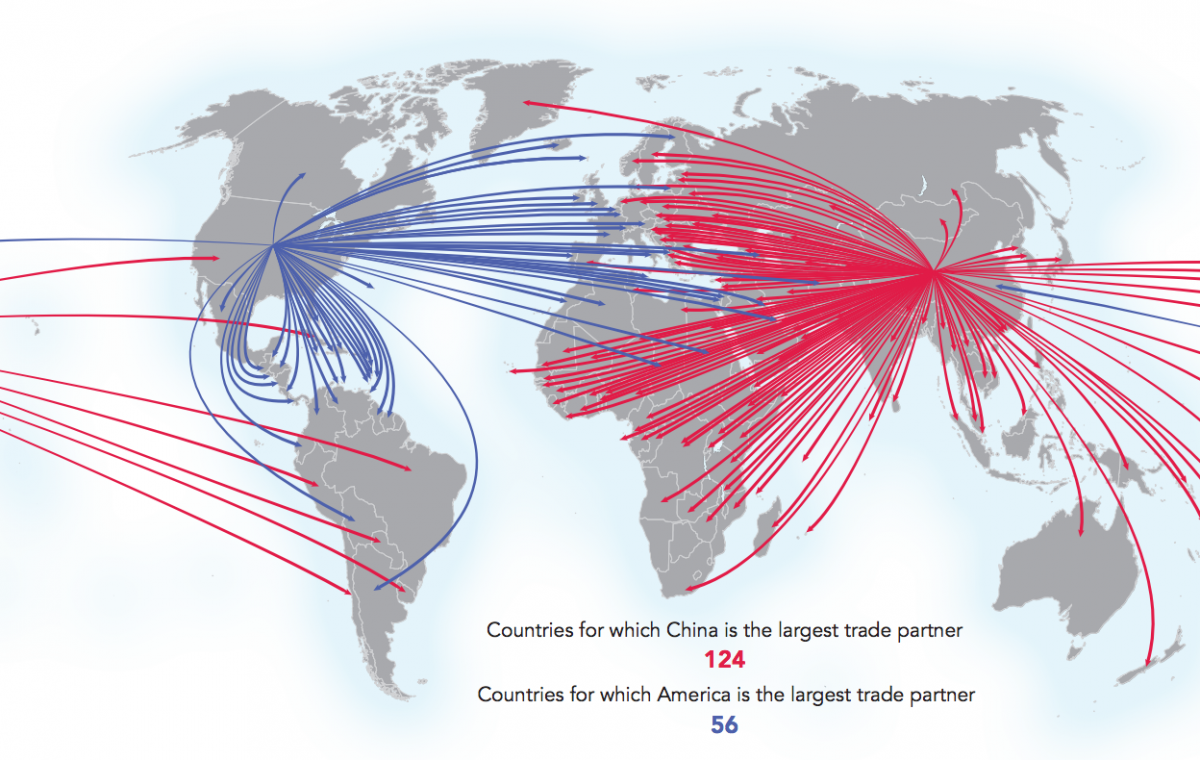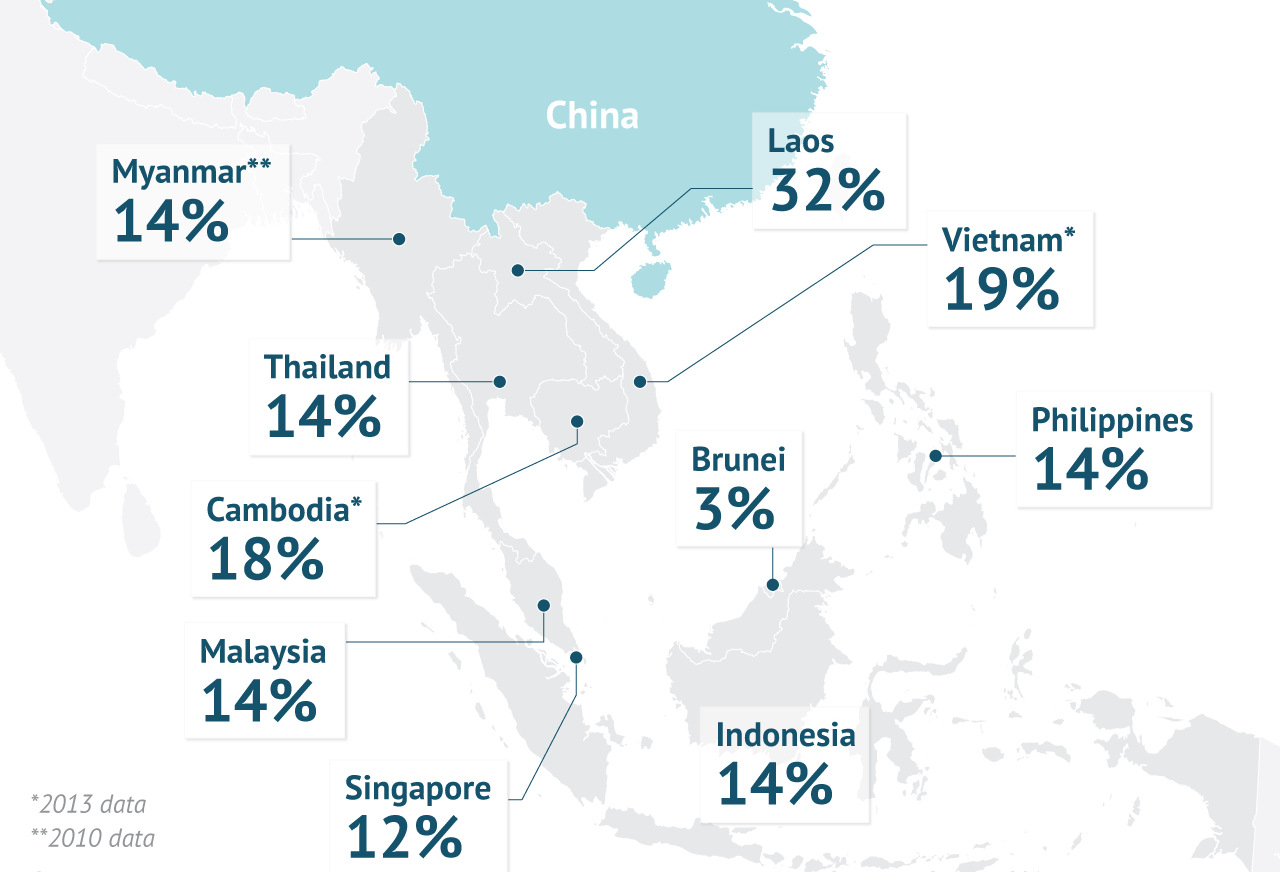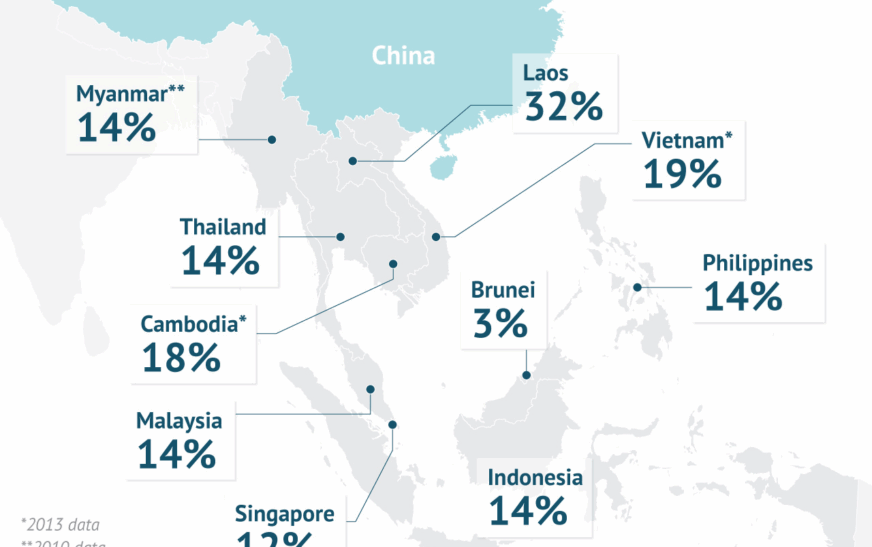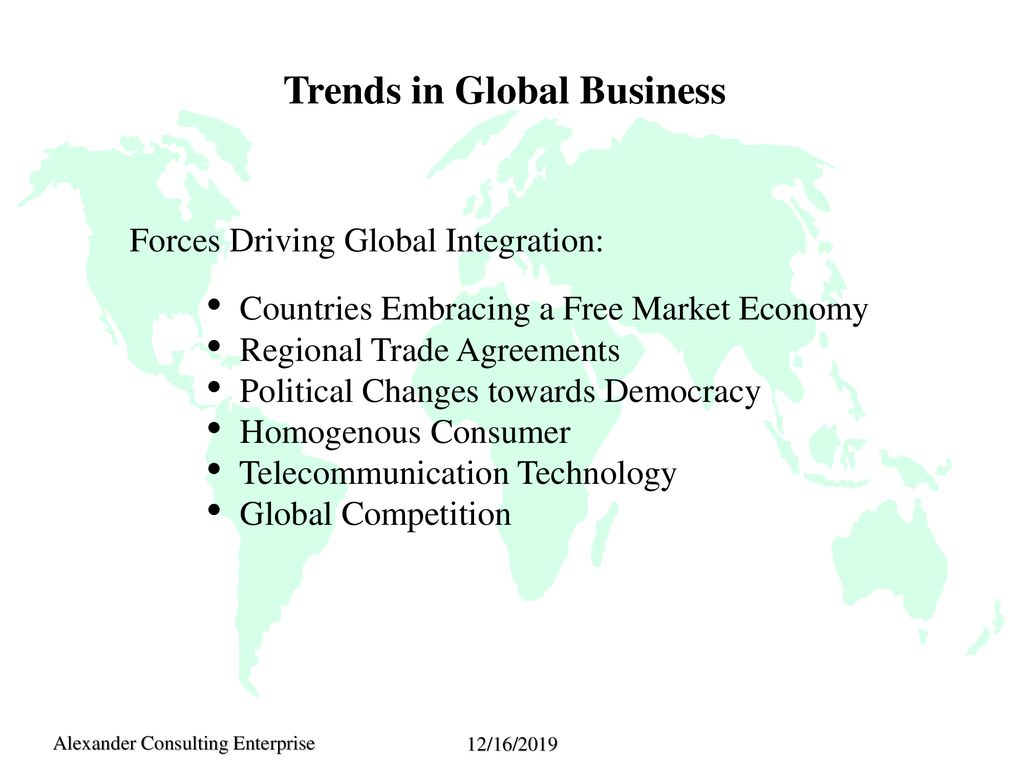Embarking on the journey of Asia’s Rising Influence in the Global Business Sphere, we delve into a landscape where Asian countries are rapidly emerging as key players in the international business arena. From economic growth to cultural influence, the dynamics of global business are being reshaped by Asia's remarkable ascent.
As we explore the various facets of Asia's growing impact on the global business stage, a fascinating narrative unfolds, showcasing the innovative strategies and influential practices that are propelling Asian economies to the forefront of the world economy.
Overview of Asia's Influence
Asia's presence in the global business sphere has been steadily increasing over the years, with the region now playing a significant role in shaping the world economy. This growth can be attributed to various factors that have contributed to Asia's rising influence in the global business landscape.Key factors contributing to Asia's rising influence in global business include:
Economic Growth
Asia has been experiencing rapid economic growth, fueled by countries such as China, India, and Japan. These countries have emerged as economic powerhouses, attracting investments and driving innovation in various industries.
Technological Advancements
Asian countries have been at the forefront of technological advancements, with countries like South Korea and Japan leading the way in areas such as electronics, robotics, and artificial intelligence. These technological innovations have helped Asian businesses stay competitive on a global scale.
Strategic Partnerships
Asian countries have been actively forming strategic partnerships with other regions, leading to increased trade and investment opportunities. Initiatives like the Belt and Road Initiative and the Regional Comprehensive Economic Partnership have further boosted Asia's influence in the global business sphere.
Examples of Asian countries making significant strides in the business world:
- China: With its booming economy and growing middle class, China has become a key player in global trade and investment.
- India: Known for its thriving IT sector and entrepreneurial spirit, India has emerged as a hub for tech startups and innovation.
- Singapore: As a leading financial center in Asia, Singapore has attracted multinational corporations and investors looking to expand their presence in the region.
Economic Growth and Innovation
Asia's economic growth has been a key driving force behind its increasing influence in the global business sphere. As the region continues to experience rapid development and expansion, it has emerged as a major player in the world economy.
Role of Innovation
Innovation plays a crucial role in driving Asia's competitiveness on the world stage. Asian countries have been investing heavily in research and development, leading to groundbreaking advancements in various industries. This focus on innovation has enabled Asian companies to stay ahead of the curve and adapt to changing market dynamics.
- Asian companies are leveraging technology to streamline their operations and enhance efficiency. By embracing automation, artificial intelligence, and big data analytics, they are able to optimize processes and deliver products and services more effectively.
- Innovation has also allowed Asian businesses to create unique value propositions and differentiate themselves in crowded markets. Whether through product innovation, marketing strategies, or customer experience enhancements, Asian companies are constantly seeking ways to stand out.
- Furthermore, the culture of innovation in Asia has fostered a mindset of continuous improvement and adaptation. Companies are quick to embrace new technologies and trends, ensuring they remain competitive in an ever-evolving business landscape.
Trade and Investment Opportunities
Asia's strategic location and growing economic power have made it a hub for trade and investment opportunities, attracting businesses from around the world. The region's trade partnerships and investment policies play a crucial role in shaping global business dynamics.
Trade Partnerships
- Asia has established strong trade partnerships with key players such as the United States, European Union, and other Asian countries.
- These partnerships have facilitated the flow of goods, services, and investments, boosting economic growth and creating new opportunities for businesses.
- Asia's participation in regional trade agreements like the ASEAN Free Trade Area and the Regional Comprehensive Economic Partnership has further enhanced its position in global trade.
Investment Opportunities
- Asia offers a diverse range of investment opportunities in sectors such as technology, manufacturing, finance, and infrastructure.
- Foreign businesses are drawn to Asia's growing consumer market, skilled workforce, and supportive business environment.
- Government initiatives like tax incentives, special economic zones, and investment-friendly policies have attracted foreign direct investment to the region.
Comparison of Trade Policies
- Asia's trade policies prioritize open markets, free trade agreements, and economic integration, promoting competitiveness and innovation.
- Compared to other regions with protectionist tendencies, Asia's approach to trade has led to increased cross-border trade and investment flows.
- The region's emphasis on trade liberalization has influenced global business dynamics, encouraging collaboration and growth in the interconnected global economy.
Influence on Global Supply Chains
Asia's influence on global supply chains is undeniable, as the region has become a key player in shaping international trade dynamics
Asia's Role in Global Supply Chains
Asia's manufacturing prowess has been a driving force behind the region's dominant position in global supply chains. Countries like China, Japan, South Korea, and Taiwan have emerged as major manufacturing hubs, producing a wide range of goods for export to markets around the world.
This has led to the integration of Asian economies into the global trade system, with supply chains relying heavily on the region for various products and components.
- Asia's manufacturing capabilities have enabled the region to become a crucial link in supply chains across industries such as electronics, automotive, textiles, and more.
- The presence of well-established industrial clusters and a skilled workforce has further solidified Asia's position as a key player in global supply chains.
- Asian countries have also invested heavily in infrastructure development, enhancing their connectivity and logistics capabilities to facilitate smoother movement of goods within supply chains.
Challenges and Opportunities
Asia's dominant position in global supply chains presents both challenges and opportunities for the region and the world at large.
While Asia's manufacturing capabilities have driven economic growth and innovation, there are concerns about over-reliance on the region for supply chain operations.
- Challenges such as geopolitical tensions, trade disputes, and natural disasters can disrupt supply chains and impact global trade flows, highlighting the need for diversification and risk management strategies.
- On the other hand, Asia's strong presence in supply chains offers opportunities for collaboration, technology transfer, and knowledge sharing among countries, fostering greater efficiency and competitiveness in the global market.
- As Asia continues to evolve as a manufacturing and trading powerhouse, the region's role in global supply chains is expected to grow, influencing the future of international trade and economic development.
Cultural Influence and Business Practices

Asian cultural values play a significant role in shaping business practices on a global scale. Understanding these values can lead to successful collaborations and partnerships in the business world.
Harmony and Relationship Building
In Asian cultures, the emphasis on harmony and maintaining relationships is crucial in business dealings. Building trust and strong relationships with business partners is prioritized over quick transactions. For example, Japanese business culture values long-term partnerships and loyalty, often leading to mutual success in business ventures.
Respect for Hierarchy and Authority
Asian societies typically have a strong respect for hierarchy and authority. This influences business practices where decisions are often made by senior leaders. Understanding and respecting this hierarchy is essential for effective communication and decision-making. For instance, in Chinese business culture, respecting seniority and authority can lead to smoother negotiations and agreements.
Long-Term Vision and Patience
Asian businesses often operate with a long-term vision, focusing on sustainable growth rather than immediate gains. This patience and strategic planning can be seen in successful business strategies like the South Korean conglomerate, Samsung, which has built a global presence through careful long-term investments in innovation and technology.
Adaptability and Flexibility
Asian cultures value adaptability and flexibility in business practices, allowing companies to pivot quickly in response to changing market conditions. This flexibility can be observed in successful business strategies like the Indian IT services company, Infosys, which has adapted to global market demands by offering a range of technological solutions tailored to different regions.
Innovation and Continuous Improvement
Asian businesses often prioritize innovation and continuous improvement, seeking new ways to stay competitive in the global market. This focus on innovation can be seen in the business practices of companies like Toyota, known for its innovative production methods and commitment to quality improvement through the concept of "Kaizen."
Wrap-Up

In conclusion, the discussion on Asia’s Rising Influence in the Global Business Sphere sheds light on the transformative power wielded by Asian countries in shaping the future of global commerce. From trade partnerships to cultural practices, Asia's imprint on the business world is indelible, marking a new chapter in the evolution of international trade and economic dynamics.
FAQ Compilation
What are some key factors contributing to Asia's rising influence in global business?
Asia's strategic geographic location, rapid economic growth, and innovative business practices are key factors fueling its increasing influence in the global business sphere.
How are Asian companies leveraging technology and innovation to gain a competitive edge?
Asian companies are investing heavily in research and development, harnessing cutting-edge technologies, and fostering a culture of innovation to enhance their competitiveness on the world stage.
What role does Asian cultural influence play in shaping business practices?
Asian cultural values such as respect for hierarchy, emphasis on relationships, and long-term orientation impact business strategies, fostering successful collaborations and partnerships rooted in mutual understanding.




